SV 104 is a body-worn personal sound exposure meter (PSEM) for full-shift, near-ear monitoring in industrial and field environments. It meets IEC 61252:2017 and ANSI/ASA S1.25-1991 (R2020) requirements for personal noise dosimeters and—when used with listed accessories—meets IEC 61672-1:2013 Class 2 for integrating-averaging sound level meters. For hearing-conservation and compliance reporting it integrates sound pressure over time to compute Dose (%), TWA8h, and LEX,8h / LEP,d under OSHA, MSHA, ACGIH, and ISO 9612.
The SV 104 records A-weighted SPL and supports three independent measurement profiles in parallel (e.g., 2/3/4/5/6 dB exchange rates; Fast/Slow/Impulse time weightings) across a typical range of 55–140 dB(A). A patented ½″ MEMS microphone with lifetime warranty enables straightforward acoustic calibration and long-term stability. The instrument ships ready to use with core accessories; an intrinsically safe (IS) variant and a Bluetooth®-enabled (SV 104A) variant are available for hazardous locations and real-time app monitoring.



How to use a noise dosimeter
Wearable noise dosimeter
The primary purpose of a wearable noise dosimeter is to measure personal sound exposure close to the ear for compliance with ISO 1999 and ISO 9612, and with OSHA, MSHA, and ACGIH frameworks. Worn on the shoulder or collar (most-exposed side), SV 104 operates unattended, logging A-weighted SPL and time history. Automatic event detection and noise-source validation assist in identifying transient or task-based contributions. Mic placement and handling: clip the microphone on the most-exposed shoulder, face the inlet upward, keep it clear of clothing, and use a windscreen outdoors.
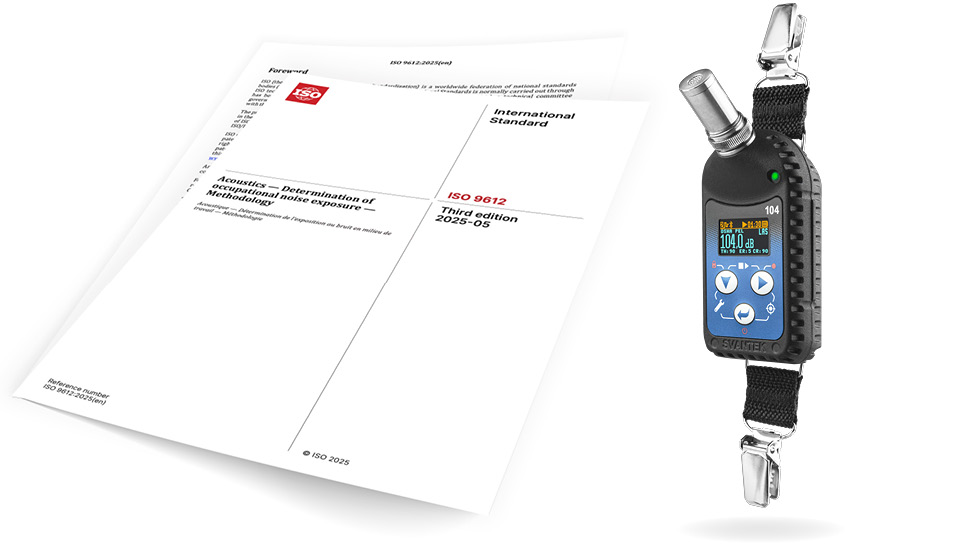
When to use a noise dosimeter
What factors determine the need for noise dose measurement?
Use personal dosimetry when workers are mobile or noise fluctuates; use area monitoring only where levels are steady and personnel are stationary. A dosimeter survey is recommended whenever exposure may reach or exceed an 8-hour threshold of 85 dBA, when processes or tooling change, or when the attenuation of current hearing protection needs verification.
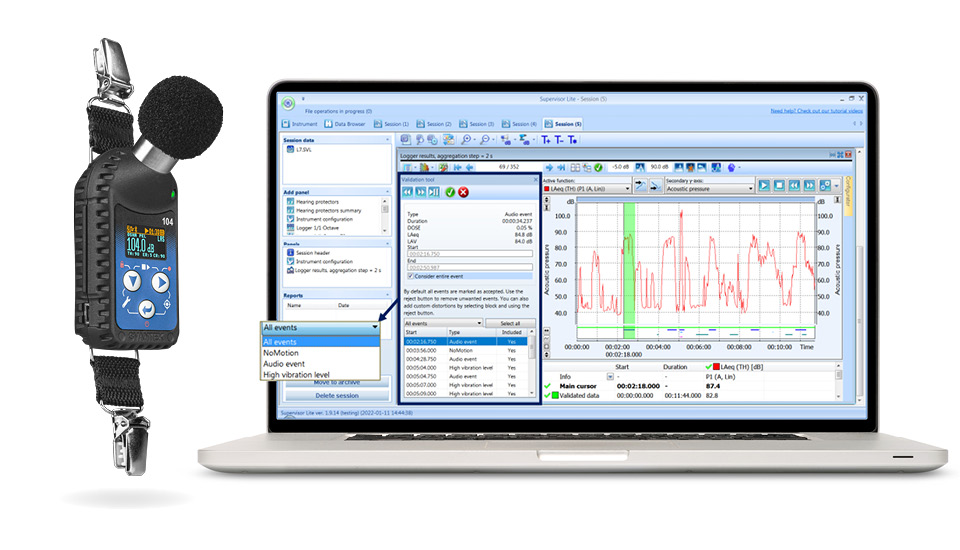
Noise dosimeter calibration
Noise dosimeter calibration with an acoustic calibrator
Field calibration: before and after each survey, check sensitivity at the calibrator frequency using an acoustic calibrator; the SV 104 starts the auto-calibration routine automatically after the microphone is inserted. Traceability: schedule periodic calibration at an accredited laboratory in accordance with IEC 61252 and internal QA procedures to maintain documented measurement reliability.
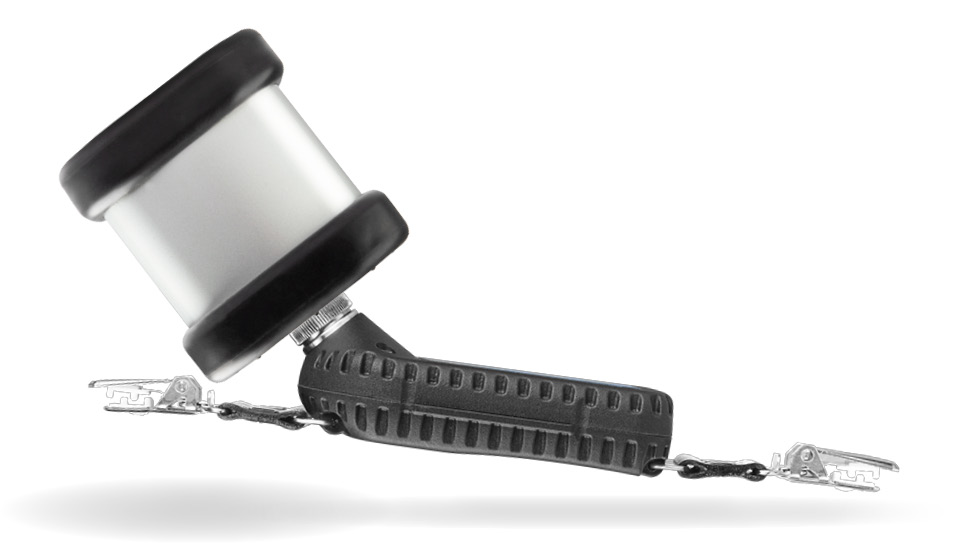
Noise dosimeter vs sound level meter
What is the difference between sound level meters and noise dosimeters?
Dosimeter: body-worn on the shoulder for full-shift personal exposure (dose, TWA(8), LEX,8h/LEP,d), ideal for mobile or variable tasks. Sound level meter: hand-held or tripod-mounted for spot measurements and diagnostics at locations or workstations. Specifications for both instruments typically correspond to IEC 61672-1 Class 2 performance.
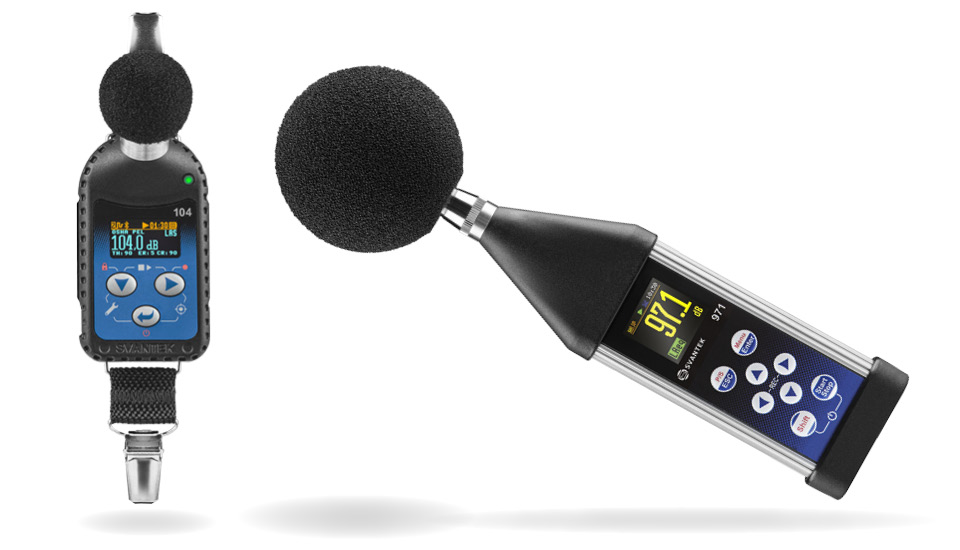
Noise dosimeter accuracy
Noise dosimeter accuracy
SV 104 performance corresponds to Class 2 integrating-averaging requirements in IEC 61672-1 for an A-weighted SPL range of 55–140 dB and a nominal frequency range of 20 Hz–8 kHz. A built-in tri-axial accelerometer records shocks or handling events so spurious data can be flagged in the time history and excluded from dose calculations.

Noise Dose Calculation
The dedicated Supervisor pc software can help you calculate your noise exposure.
SV 104 logs personal exposure in three independent profiles so results can be reported simultaneously using different configurations (e.g., 2/3/4/5/6 dB exchange rate; Fast/Slow/Impulse). 100% dose represents the permissible daily exposure for the selected standard, and each exchange-rate step halves allowable time per equal-level increase (e.g., +3 dB at NIOSH vs +5 dB at OSHA). The Supervisor PC software imports SV 104 data to produce reports for ISO 9612, OSHA, MSHA, and ACGIH workflows, and to support hearing-protection selection.
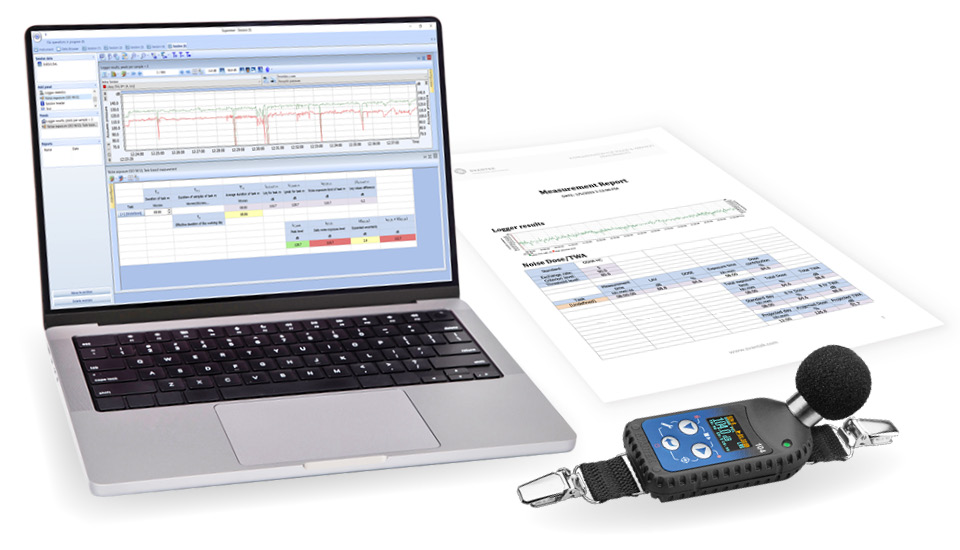

Wearable noise dosimeter
Read more

What factors determine the need for noise dose measurement?
Read more

Noise dosimeter calibration with an acoustic calibrator
Read more

What is the difference between sound level meters and noise dosimeters?
Read more

Noise dosimeter accuracy
Read more

The dedicated Supervisor pc software can help you calculate your noise exposure.
Read more
Occupational Noise
Noise dosimeters conforming to IEC 61252 and ANSI S1.25-1991
Personal noise-exposure monitoring for hearing-conservation programs (ISO 9612 / OSHA 1910.95).
SV 104 is deployed for full-shift personal dosimetry where noise is mobile or task-varying—e.g., manufacturing lines, construction, mining, logistics, and utilities. Typical applications include baseline surveys, task-based studies, post-change assessments (new tools/processes), and verification that existing hearing protection provides adequate attenuation. Results feed ISO 9612 / OSHA / NIOSH reporting and guide selection of hearing protectors and administrative controls.
Read more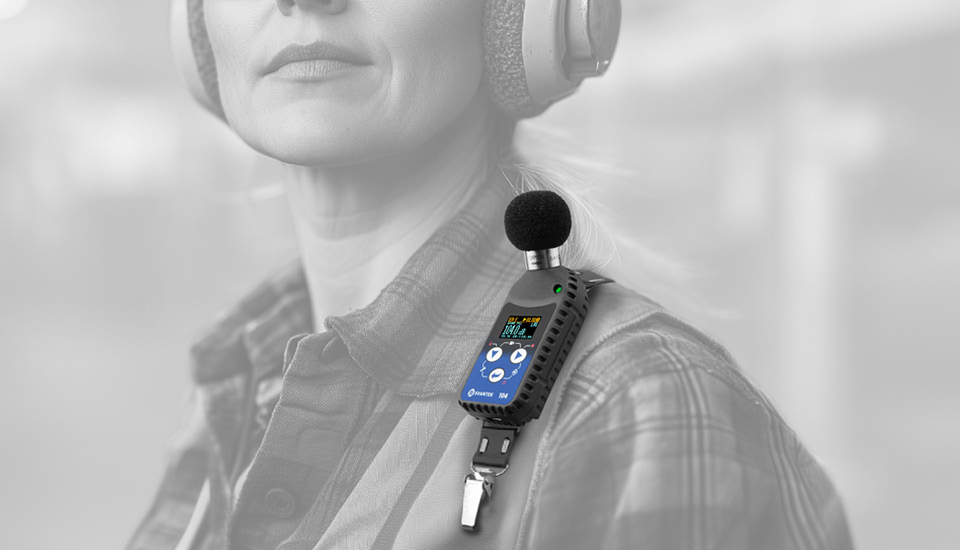
SV 104 – Noise Dosimeter
Applications
Hardware Features
Sound measurements features
Please select the file and language version